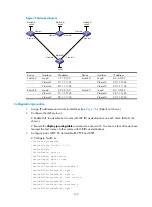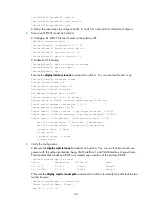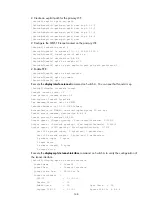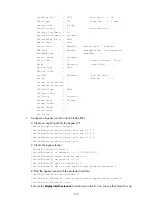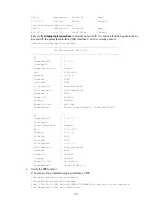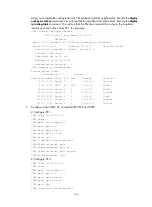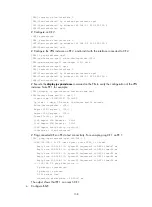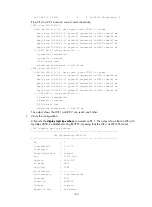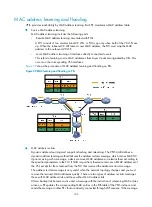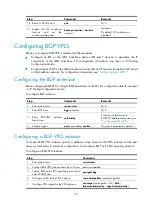
156
After you complete the configuration, the PEs establish an OSPF neighborship. Execute the
display
ospf peer verbose
command. You will see that the neighborship state is FULL. Execute the
display
ip routing-table
command. You will see that the PEs have learned the routes to the loopback
interfaces of each other. Take PE 1 for example:
[PE1] display ospf peer verbose
OSPF Process 1 with Router ID 2.2.2.2
Neighbors
Area 0.0.0.0 interface 10.0.0.1(Vlan-interface2)'s neighbors
Router ID: 3.3.3.3 Address: 10.0.0.2 GR State: Normal
State: Full Mode:Nbr is Master Priority: 1
DR: None BDR: None
Dead timer due in 30 sec
Neighbor is up for 00:01:00
Authentication Sequence: [ 0 ]
[PE1] display ip routing-table
Routing Tables: Public
Destinations : 7 Routes : 7
Destination/Mask Proto Pre Cost NextHop Interface
2.2.2.2/32 Direct 0 0 127.0.0.1 InLoop0
3.3.3.3/32 OSPF 10 1563 10.0.0.2 Vlan2
10.0.0.0/24 Direct 0 0 10.0.0.1 Vlan2
10.0.0.1/32 Direct 0 0 127.0.0.1 InLoop0
10.0.0.2/32 Direct 0 0 10.0.0.2 Vlan2
127.0.0.0/8 Direct 0 0 127.0.0.1 InLoop0
127.0.0.1/32 Direct 0 0 127.0.0.1 InLoop0
2.
Configure basic MPLS TE, and enable RSVP-TE and CSPF:
# Configure PE 1.
[PE1] mpls lsr-id 2.2.2.2
[PE1] mpls
[PE1-mpls] lsp-trigger all
[PE1-mpls] mpls te
[PE1-mpls] mpls rsvp-te
[PE1-mpls] mpls te cspf
[PE1-mpls] quit
[PE1] interface vlan-interface 2
[PE1-Vlan-interface2] mpls
[PE1-Vlan-interface2] mpls te
[PE1-Vlan-interface2] mpls rsvp-te
[PE1-Vlan-interface2] quit
# Configure PE 2.
[PE2] mpls lsr-id 3.3.3.3
[PE2] mpls
[PE2-mpls] lsp-trigger all
[PE2-mpls] mpls te
[PE2-mpls] mpls rsvp-te
[PE2-mpls] mpls te cspf
[PE2-mpls] quit
[PE2] interface vlan-interface 2


